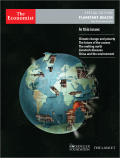
What risks do our civilisations face, and how will we identify them? Are we living through a key transition for our species and civilisations, and how would we know if we were? What forces have shaped past civilisations and our civilisations today, and what will protect future civilisations? What will determine human sustainability and resilience in the face of these planetary dangers? Is human and planetary sustainability compatible with our current expectations for economic growth and material prosperity?
To answer these and other questions, The Lancet and The Rockefeller Foundation are launching a commission and convening a major global gathering at the Foundation’s Center in Bellagio, Italy. This special edition of The Economist magazine will, together with other inputs, help shape that ongoing conversation.
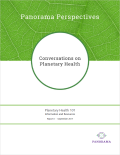
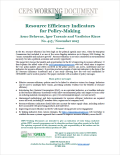
In the EU, resource efficiency has been high on the political agenda since 2011, when the European Commission first included it as one of the seven flagship initiatives in its Europe 2020 Strategy for “smart, sustainable and inclusive growth”. Resource efficiency is not only considered an environmental necessity, but also a political, economic and security opportunity.
This paper first stresses the benefits and opportunities for the EU of improving its resource efficiency. It then explains the added value of the www.measuring-progress.eu web tool, which aims to improve the way policy-makers and others involved in the policy process can access, understand and use indicators for resource efficiency. It provides practical examples of relevant indicators in the form of the EU Resource Efficiency Scoreboard and a case study showing how the web tool established by NETGREEN can be used in practice. The paper concludes with a number of policy messages.
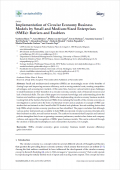
Small and medium-sized enterprises (SMEs) are increasingly aware of the benefits of closing loops and improving resource efficiency, such as saving material costs, creating competitive advantages, and accessing new markets. At the same time, however, various barriers challenge small businesses in their transition to a circular economy, namely a lack of financial resources and a lack of technical skills.
This paper aims to increase understanding about the barriers and enablers experienced by SMEs when implementing circular economy business models. The authors recommend that European and national policies strengthen their focus on greening consumer preferences, market value chains and company cultures, and support the recognition of SMEs’ green business models. This can be achieved through the creation of dedicated market places and communities of practice, for example.
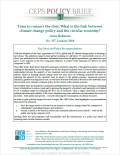
In December 2015, the European Commission published the new Circular Economy Package, containing a host of initiatives to reduce waste and to increase the longevity of products and materials, but it failed to set a headline target for reducing the EU’s use of resources. Such a target could help to increase political attention and visibility of the issue, stimulate long-term ambitions and streamline the action of all actors – both public and private – towards reducing the consumption of natural resources.
In order to gain political support for such a target, this CEPS Policy Brief highlights two preconditions that need to be obtained:
- The target needs to be based on an attractive vision for change shared by a majority of stakeholders (including business and industry).
- It needs to be based on robust and consistent indicators across the EU – both on the public and on the company level.
Meeting these two preconditions will considerably ease the introduction of a policy mix aimed at fostering more circular business models.
